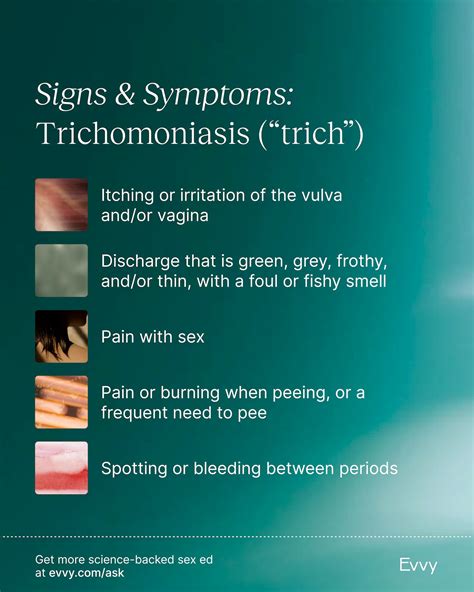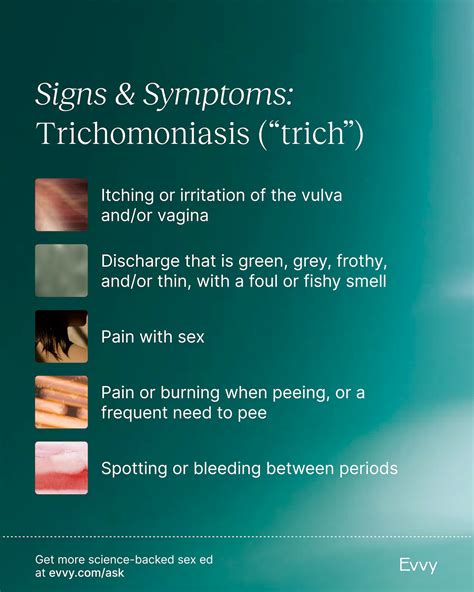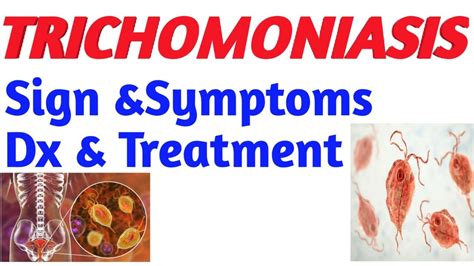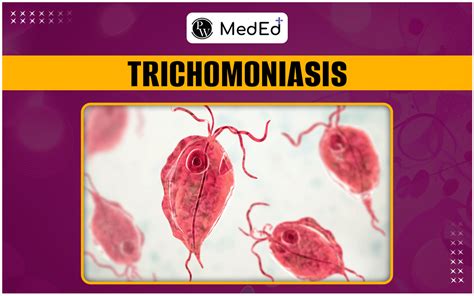Intro
Learn about Trichomoniasis infection, a common sexually transmitted disease caused by a parasite, with symptoms like vaginal discharge and genital itching, and discover treatment options and prevention methods to protect against this STI.
Trichomoniasis, also known as trich, is a sexually transmitted infection (STI) caused by the parasite Trichomonas vaginalis. It is one of the most common STIs worldwide, affecting millions of people each year. Trichomoniasis can infect both men and women, although symptoms are more common in women. The infection can cause uncomfortable symptoms, such as itching, burning, and discharge, and can also increase the risk of other health problems, including HIV and pregnancy complications.
Trichomoniasis is often spread through vaginal, anal, or oral sex with an infected partner. The parasite can also be transmitted through sharing sex toys or other objects that come into contact with infected bodily fluids. In some cases, trichomoniasis can be spread from mother to child during childbirth. It is essential to practice safe sex, such as using condoms and dental dams, to reduce the risk of transmission. Regular STI testing is also crucial, especially for individuals who have multiple sex partners or engage in high-risk behaviors.
The importance of understanding trichomoniasis cannot be overstated. This infection can have significant consequences for reproductive health, particularly for women. Untreated trichomoniasis can lead to infertility, ectopic pregnancy, and preterm labor. Additionally, trichomoniasis can increase the risk of HIV transmission and acquisition. By learning more about trichomoniasis, individuals can take steps to protect themselves and their partners from this preventable infection.
What is Trichomoniasis?

Symptoms of Trichomoniasis
The symptoms of trichomoniasis can vary depending on the individual and the severity of the infection. Some common symptoms include: * Abnormal vaginal discharge, which may be yellow, green, or gray in color * Vaginal itching or burning * Painful urination * Abdominal pain or cramping * Unpleasant odor * Blood in the urine or vaginal discharge Men may experience symptoms such as: * Painful urination * Discharge from the penis * Itching or burning in the genital area * Abdominal pain or crampingHow is Trichomoniasis Diagnosed?

Treatment Options for Trichomoniasis
Trichomoniasis is usually treated with antibiotics, such as metronidazole or tinidazole. These medications can be taken orally or applied topically to the affected area. It is essential to complete the full course of treatment, even if symptoms resolve before finishing the medication. Treatment can help alleviate symptoms, reduce the risk of transmission, and prevent complications. In some cases, a healthcare provider may also recommend treating sex partners to prevent reinfection.Complications of Trichomoniasis

Prevention and Control of Trichomoniasis
Preventing trichomoniasis requires a combination of safe sex practices, regular STI testing, and treatment. Some ways to prevent trichomoniasis include: * Using condoms and dental dams during sex * Getting tested for STIs regularly * Avoiding sharing sex toys or other objects that come into contact with bodily fluids * Practicing good hygiene, such as washing hands and genitals regularly * Avoiding douching or using scented products, which can disrupt the natural balance of bacteria in the vaginaLiving with Trichomoniasis

Coping with the Emotional Impact of Trichomoniasis
Receiving a diagnosis of trichomoniasis can be emotionally challenging. Individuals may experience feelings of shame, anxiety, or depression. It is essential to seek support from a healthcare provider, therapist, or support group. Some coping strategies include: * Practicing self-care, such as exercise, meditation, or spending time with loved ones * Seeking support from friends and family * Joining a support group or online community * Focusing on prevention and management, rather than dwelling on the pastConclusion and Next Steps

We invite you to share your thoughts and experiences with trichomoniasis in the comments below. If you have any questions or concerns, please do not hesitate to reach out to a healthcare provider or a trusted resource. Together, we can work towards reducing the incidence of trichomoniasis and promoting reproductive health and wellness.
What are the symptoms of trichomoniasis in women?
+Common symptoms of trichomoniasis in women include abnormal vaginal discharge, vaginal itching or burning, painful urination, abdominal pain or cramping, and an unpleasant odor.
How is trichomoniasis diagnosed?
+Trichomoniasis can be diagnosed through a physical examination, medical history, and laboratory tests, such as a wet mount or culture.
Can trichomoniasis be treated?
+Yes, trichomoniasis can be treated with antibiotics, such as metronidazole or tinidazole. It is essential to complete the full course of treatment, even if symptoms resolve before finishing the medication.
